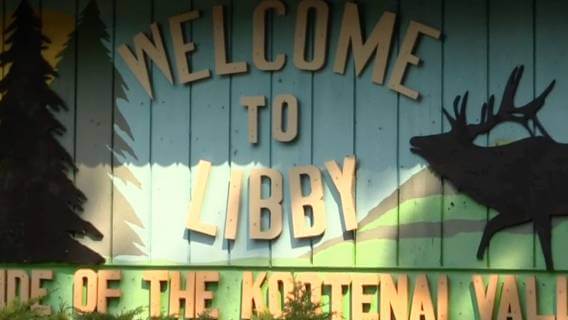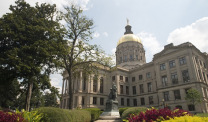Jury Finds Libby CARD Clinic Guilty of Filing False Asbestos Health Claims
Legislation & LitigationWritten by Michelle Whitmer | Edited By Walter Pacheco

The Center for Asbestos Related Disease, located in a small Montana mining town and current asbestos Superfund site, is now entangled in fraudulent asbestos health claims costing the government more than a million dollars.
A federal jury ruled in late June that the CARD clinic in Libby, Montana, submitted 337 false asbestos claims that made patients eligible for Medicare and other benefits they should not have received.
BNSF Railway filed a lawsuit against the clinic under the federal False Claims Act in 2019, alleging CARD failed to get outside confirmation that more than 300 patients had an asbestos-related disease such as mesothelioma, asbestosis or asbestos-related lung cancer.
The railroad company, owned by Warren Buffett, is a defendant in several lawsuits over its role in asbestos contamination that has affected thousands of residents. In 2020, the Montana Supreme Court found BNSF liable for shipping asbestos-contaminated vermiculite through Libby.
Libby was declared a Superfund site two decades ago. Cleanup continues at the site of the former vermiculite mine.
BNSF Can Recover Compensation
A seven-person jury determined CARD officials made false medical claims on behalf of patients. The railway could be eligible for 15% to 25% of any amount recovered by the government, according to The Associated Press.
Attorneys for CARD argued the diagnoses were allowable under the 2010 Affordable Care Act.
“CARD was doing exactly what the law said,” clinic attorney Tim Bechtold said during closing arguments that followed 11 days of testimony, according to the AP.
In May, the Montana House of Representatives passed a resolution recognizing CARD as a Center of Excellence. The designation means CARD can obtain additional funding to meet the clinic’s local obligations in Lincoln County, Montana.
Officials at CARD provide asbestos screenings, resources and advocacy for people in Libby, and they see about 35 new patients monthly. Screenings include a physical, chest X-ray, a CT scan, spirometry breathing test and complete blood work. A trained CARD medical provider reviews all test results for signs of asbestos-related diseases.
Dr. Brad Black, the clinic’s doctor, has certified more than 3,400 people with asbestos-related diseases, according to court documents reported by the AP. Black claims other doctors can miss signs of asbestos-related illness specific to Libby residents.
“That’s not the practice of medicine; that’s the practice of roulette,” BNSF attorney Adam Duerk said. “When you see it, when you’re certain it’s there, that’s when you diagnose, not before.”
History of Libby Asbestos Mining
Libby was once a prosperous vermiculite mining town. Mining there began in 1919. Vermiculite, which was known commercially as Zonolite, was used to insulate homes and buildings. However, the mineral formed alongside asbestos veins, making it easy for asbestos to contaminate the vermiculite deposit.
When W.R. Grace & Company took over the mining operation in 1963, it knew about the asbestos contamination and the health problems it caused but didn’t warn anyone. Grace distributed its leftover vermiculite for use in playgrounds, backyards, gardens, roads, driveways and other popular locations in town, increasing the risk of asbestos exposure among the residents.
During decades of mining, Libby mine workers and residents were exposed to the toxic dust. Mining ended in 1990, and since then, about 2,400 people in the area have been diagnosed with an asbestos-related disease.
A 2021 study in the Journal of Exposure Science and Environmental Epidemiology found nearly 700 residents have died of an asbestos-related disease such as mesothelioma, asbestosis or asbestos-related lung cancer. At least 1 in 10 people in Libby currently have an asbestos-related illness, according to CARD.
Libby gained national attention in 1999 after a series of newspaper articles in the Seattle Post-Intelligencer. The U.S. Environmental Protection Agency intervened, and a cleanup started in 2000. Libby later became an asbestos Superfund site. Today, the EPA considers Libby safe. The amount of asbestos in downtown Libby is nearly 100,000 times lower than when the mine was operating.
Libby Asbestos Lawsuits
Thousands of Libby residents and former mine workers have filed lawsuits against Montana state agencies for failure to warn them of the dangerous asbestos. Several major group payouts have compensated affected Libby residents.
The first lawsuits were filed in the mid-1990s against W.R. Grace & Company. The company paid out millions in claims, but then filed for bankruptcy. Its bankruptcy trust fund limited settlements to smaller amounts.
A district court judge in 2011 approved a $43 million settlement spread across 1,300 plaintiffs. Another settlement in 2017 involved $25 million and 1,000 plaintiffs. In February 2022, a jury in Great Falls, Montana, awarded laborer Ralph Hutt $6.5 million in compensatory damages and $30 million in punitive damages in a lawsuit related to vermiculite mining.






